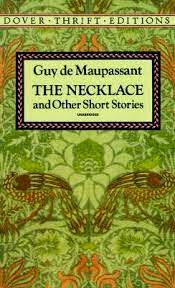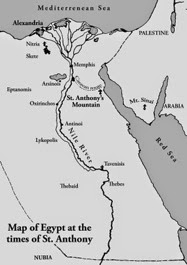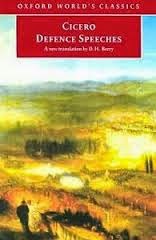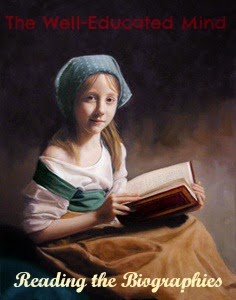“You are great, Lord, and highly to be praised: great is your power and your wisdom is immeasurable.”
Book No. 1
Book: The Confessions of Saint Augustine
Oxford World Classics
Translation: Henry Chadwick
I’m starting my Well-Educated Mind Biography Project with possibly the first biography ever written, Confessions by St. Augustine. Born in 354 A.D. in Thagaste, which is modern day Algeria, Augustine reveals his time as a boy growing up in North Africa, his profession as a teacher of rhetoric, his travels to Rome, his connections with the Manicheans*, and finally his conversion to Christianity. We, as a reader, are privileged to have a window into his life and internal struggles, as he asks questions about life and God.
*Manicheanism: a quasi-religion that taught a dualism of everything that is material is evil, and everything that is spirit is good. Their beliefs caused them to take rather bizarre views of Christian teachings such as: because God created a material world, he cannot be good; Jesus did not become man because all material is evil, etc.
First Stage of Reading:
What historical events coincide-or merge-with these personal events?
Augustine lived in the Roman Empire during a time of political, social and religious turmoil, which helped him to produce prolific amounts of writing addressing these situations.
Augustine was born in a century where at the beginning, Christianity was a persecuted religion, yet at the end of the century most people of the Roman Empire were at least ostensibly Christian and Christianity was the official religion of the Empire. As the church attempted to determine its nature, there were many disputes among Christians and much of Augustine’s writing deals with these issues. He also endeavoured to reconcile pagan thought with Christian values, one of the first Latin writers to explore the benefits of pagan ideas as well as assessing their limitations.
Who is the most important person (or people) in the writer’s life?
Perhaps the most important person in Augustine’s life was his mother, Monica. Her prayers and petitions for him were unceasing and what a wonderful thing for her to see him eventually become a believer.
Ambrose, the archbishop of Milan, was instrumental in Augustine’s journey away from Manichean belief and towards a belief in God. Augustine respected his intellect and his influence on Augustine was unequivocal, as he encouraged him to look beyond the literal into the substance of the Bible, and asserted that a deeper meaning could be found there, contrary to what Augustine had learned from his Manichean teachers.
 |
Saint Augustine in his study (1480)
Sandro Botticelli
source Wikipedia |
The Second Stage of Reading:
What is the theme that ties the narrative together?
Confession is the most important word in this work. It is as if Augustine must confess to make his journey complete.
What is the life’s turning point? Is there a conversation?
Well, of course, Confessions is a very long conversation of Augustine’s with God. But in reference to his conversion, I believe it was more a process. Augustine himself said that he believed that God was with him and guiding him even when he was living with sin and recriminations. He also makes reference to not being ready to hear or act on certain convictions, so in retrospect, while Confessions is a conversation with God, it is also the story of his life. I like this presentation because it makes his life meaningful; even though Augustine at times made poor choices and employed wrong-thinking, none of his life, in effect, was “wasted.”
 |
The Confessions of Saint Augustine
source Wikipedia |
The Third Stage of Reading:
What are the three moments, or time frames, of the autobiography?
1. As a child, forming a poor character by stealing and valuing things that were superficial . He grew up accepting the social value of using knowledge as an end, rather than as a means to forming good character, yet he could see that there was no fruit in this approach to life.
2. As a young man, being influenced by friends and being draw into the Manichean beliefs as he searched for meaning in the world. Augustine seemed to straddle the life of worldly pleasures and the search for a life of abiding faith.
3. As a more mature man, finding a way of reconciling God to his intellect, converting to Christianity, discovering joy and peace, and writing his confessions.
Do you agree with what the writer has done?
I absolutely love that Augustine kept searching. We all get pulled into the world to a certain extent, by technology, materialism, etc. and we all struggle with our human nature. Augustine’s search for God ended not only in finding Him, but by learning that God had been search for him all-along. And in the end, Augustine was no longer living for himself but for God, a manner of living that brought such joy and contentment to his spirit.
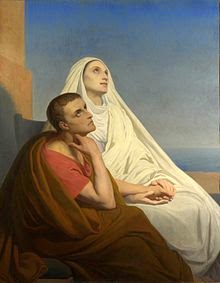 |
Saint Augustine & Saint Monica (1846)
Ary Scheffer
source Wikipedia |
This book is broken up into two section, the first being Augustine’s autobiography (the first 9 books) and the second being theological & philosophical works (the last 4 books). With regard to the latter, Augustine’s curiosity and quite astounding intellect can leave his reader going “huh?” as we try to navigate with him through the quite confusing realms of memory & senses, the meaning of time, and the book of Genesis and how it intersects with the Trinity. In retrospect, the change in tone between these two sections are perhaps not as unusual as they first appear. In the first nine autobiographical books, Augustine is dealing with the past, yet with the second section, he deals with the present and some of the thoughts that he is reflecting on during his life as a bishop. These subjects also tie into the material he has already presented: memory affects his presentation of his past experiences, time relates to the existence of his past recollections, and the chapters on Genesis and the Trinity are reminiscent of his earlier inquiries on how to read the Bible and how to view God.
During my first reading of Confessions, the last few chapters honestly went over my head, but with this second reading, I was able to follow Augustine’s train of thought at least now and then. I will definitely re-read this book in the future. There is so much to draw from this great intellect and I still feel that I have only scratched the surface.
 |
Portrait by Phillipe de Champaigne
17th century
source Wikipedia |
Favourite Quotes:
“If anyone find your simultaneity beyond his understanding, it is not for me to explain it. Let him be content to say ‘What is this?’ (Exod. 16:15). So too let him rejoice and delight in finding you who are beyond discovery rather than fail to find you by supposing you to be discoverable.”
In our present time, where progress counts for so much, how many people would be content with not knowing? And how paradoxical that a desire for discovery of something unknowable, actually brings less knowledge than “not knowing”.
“There is never an obligation to be obedient to orders which it would be pernicious to obey.”
Further reading:
http://www.college.columbia.edu/core/node/1759
 And since this book is set in Spain, what better tribute than to read it in Spanish? So that’s what I did after my foray into it in Latin. “Había una vez en España un torito que se llamaba Ferdinando.”
And since this book is set in Spain, what better tribute than to read it in Spanish? So that’s what I did after my foray into it in Latin. “Había una vez en España un torito que se llamaba Ferdinando.”


